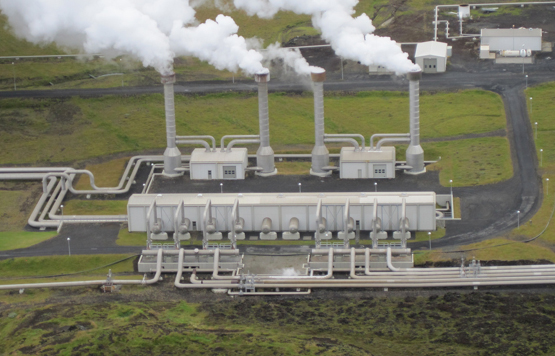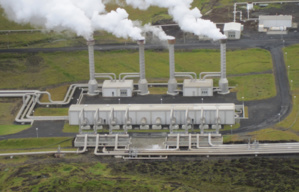Costa Rica’s state electricity company, ICE, announced that as of 2015, 97% of the country’s electricity is generated by renewable energy sources be it from wind, solar, hydro or geothermal. In fact, Costa Rica’s electricity is generated by using all the aforementioned renewable energy sources.
“The country as such, along with its energy and environmental policies, has decided that it wants its energy development to be based on renewable sources,” said Javier Orozco, ICE’s System Expansion Process Head.
Although it is 97% dependent on clean energy sources, they are uneasy to be reliant on 100% alternatives energy. “We use thermal energy generation as a complement because renewables depend on the climate and you can’t guarantee that there will always be wind or water,” said a government official. What is remarkable though, is that this Central American country, with a population of 4.5 million people has almost gone to the other side and is hardly dependent on fossil fuels for meeting its energy requirements.
In fact, a spokesperson from ICE has announced that Costa Rica has achieved a major milestone in the beginning of 2015 itself: in the first 75 days of this year, the country has not used any coal to generate its electricity, not a single kilogram or a single litre was used.
“In our country, we build thermal plants to keep them turned off. Our aim is to have thermal plants that are turned off most of the time,” said Orozco. However, this objective can be a hard target, since electricity generated from hydroelectric can vary, since it is seasonal and climate dependent and with the world facing the adverse effects of climate change it certainly is not very reliable. This is why in 2014, the usage of fossil fuel peaked: it generated 10.3% of the country’s total electric supply.
Since the middle of the 20th century, hydroelectricity has played a vital role. Although in Costa Rica’s energy mix, fossil fuels did play a part, it has learnt to wean itself off it and be more reliant on alternative energy sources. In 2014, of the total electricity demand of 2800MW, 63% was generated by hydropower and the remaining demand met by electricity generated from geothermal and wind power.
With climate change making its presence felt in the world, the El Niño had a dastardly effect impact on Costa Rica as it experienced one of the worst drought in over half a century. This has naturally effected projections for electricity generated from alternative energies for the future. Its energy mix must be diversified enough so as to withstand the effects of climate change and yet not contribute to global warming.
It is thus exploring the limits of alternative energies and the possibility of being 100% reliant on clean energy is still on the table. Scientists are now exploring strategies based on geothermal power. Costa Rica is gifted with lots of volcanic activities, scientists and engineers are figuring out ways and perfecting the techniques through which the earth’s heat can be put to use and generate electricity.
“We are planning the construction of the new geothermal plant, Pailas II, and we are at the stage of feasibility studies for a new field. Geothermal power is important because it isn’t subject to climate change, but is constant,” explained Orozco.
The dilemma in using geothermal power is that most of it lies in national parks – an area that is out of bounds by law for any kind of development work. However, René Castro, the former Minister of Environment and Energy see it as a viable option.
“It is possible. Two changes are needed: ICE would need to expand geothermal energy production, and the extraction of this source of energy in national parks would need to be authorised, while paying royalties to the parks and replacing the land used, twice over: if 50 hectares are used (in a park), the equivalent of 100 percent of its ecological value would be replaced. [The other is] to authorise the private sector to generate electricity with biomass from pineapple or banana plant waste, or sawdust,” and sell the same to ICE.
So as to tackle issues vis-à-vis green energy, the Government is holding a national dialog on electrical energy. The transportation sector is emerging as the weakest link in the chain.
“The transportation sector is the biggest energy consumer at a national level and is responsible for 67 percent of the country’s total greenhouse gas emissions,” said Édgar Gutiérrez the Minister of Environment and Energy. He went on to add that “addressing the challenges in this sector is a priority”
Frank Chang, a scientist who is currently working on hydrogen based renewable energy systems, thinks that “the problem doesn’t lie in electricity but in transportation. That’s where we have to distance ourselves from the use of petroleum, introduce our own fuel in our own country with hydrogen-based technologies.”
References:
“The country as such, along with its energy and environmental policies, has decided that it wants its energy development to be based on renewable sources,” said Javier Orozco, ICE’s System Expansion Process Head.
Although it is 97% dependent on clean energy sources, they are uneasy to be reliant on 100% alternatives energy. “We use thermal energy generation as a complement because renewables depend on the climate and you can’t guarantee that there will always be wind or water,” said a government official. What is remarkable though, is that this Central American country, with a population of 4.5 million people has almost gone to the other side and is hardly dependent on fossil fuels for meeting its energy requirements.
In fact, a spokesperson from ICE has announced that Costa Rica has achieved a major milestone in the beginning of 2015 itself: in the first 75 days of this year, the country has not used any coal to generate its electricity, not a single kilogram or a single litre was used.
“In our country, we build thermal plants to keep them turned off. Our aim is to have thermal plants that are turned off most of the time,” said Orozco. However, this objective can be a hard target, since electricity generated from hydroelectric can vary, since it is seasonal and climate dependent and with the world facing the adverse effects of climate change it certainly is not very reliable. This is why in 2014, the usage of fossil fuel peaked: it generated 10.3% of the country’s total electric supply.
Since the middle of the 20th century, hydroelectricity has played a vital role. Although in Costa Rica’s energy mix, fossil fuels did play a part, it has learnt to wean itself off it and be more reliant on alternative energy sources. In 2014, of the total electricity demand of 2800MW, 63% was generated by hydropower and the remaining demand met by electricity generated from geothermal and wind power.
With climate change making its presence felt in the world, the El Niño had a dastardly effect impact on Costa Rica as it experienced one of the worst drought in over half a century. This has naturally effected projections for electricity generated from alternative energies for the future. Its energy mix must be diversified enough so as to withstand the effects of climate change and yet not contribute to global warming.
It is thus exploring the limits of alternative energies and the possibility of being 100% reliant on clean energy is still on the table. Scientists are now exploring strategies based on geothermal power. Costa Rica is gifted with lots of volcanic activities, scientists and engineers are figuring out ways and perfecting the techniques through which the earth’s heat can be put to use and generate electricity.
“We are planning the construction of the new geothermal plant, Pailas II, and we are at the stage of feasibility studies for a new field. Geothermal power is important because it isn’t subject to climate change, but is constant,” explained Orozco.
The dilemma in using geothermal power is that most of it lies in national parks – an area that is out of bounds by law for any kind of development work. However, René Castro, the former Minister of Environment and Energy see it as a viable option.
“It is possible. Two changes are needed: ICE would need to expand geothermal energy production, and the extraction of this source of energy in national parks would need to be authorised, while paying royalties to the parks and replacing the land used, twice over: if 50 hectares are used (in a park), the equivalent of 100 percent of its ecological value would be replaced. [The other is] to authorise the private sector to generate electricity with biomass from pineapple or banana plant waste, or sawdust,” and sell the same to ICE.
So as to tackle issues vis-à-vis green energy, the Government is holding a national dialog on electrical energy. The transportation sector is emerging as the weakest link in the chain.
“The transportation sector is the biggest energy consumer at a national level and is responsible for 67 percent of the country’s total greenhouse gas emissions,” said Édgar Gutiérrez the Minister of Environment and Energy. He went on to add that “addressing the challenges in this sector is a priority”
Frank Chang, a scientist who is currently working on hydrogen based renewable energy systems, thinks that “the problem doesn’t lie in electricity but in transportation. That’s where we have to distance ourselves from the use of petroleum, introduce our own fuel in our own country with hydrogen-based technologies.”
References:






